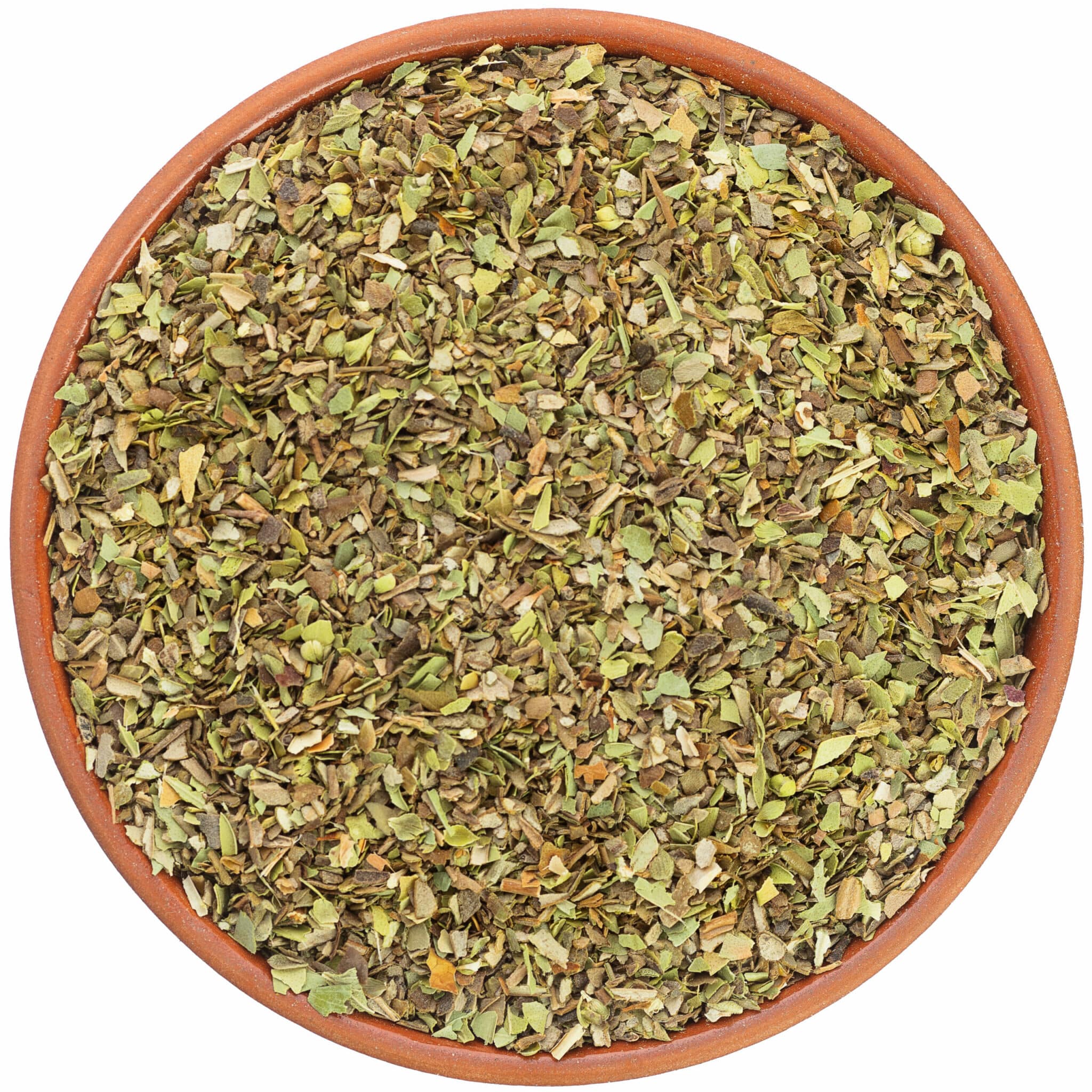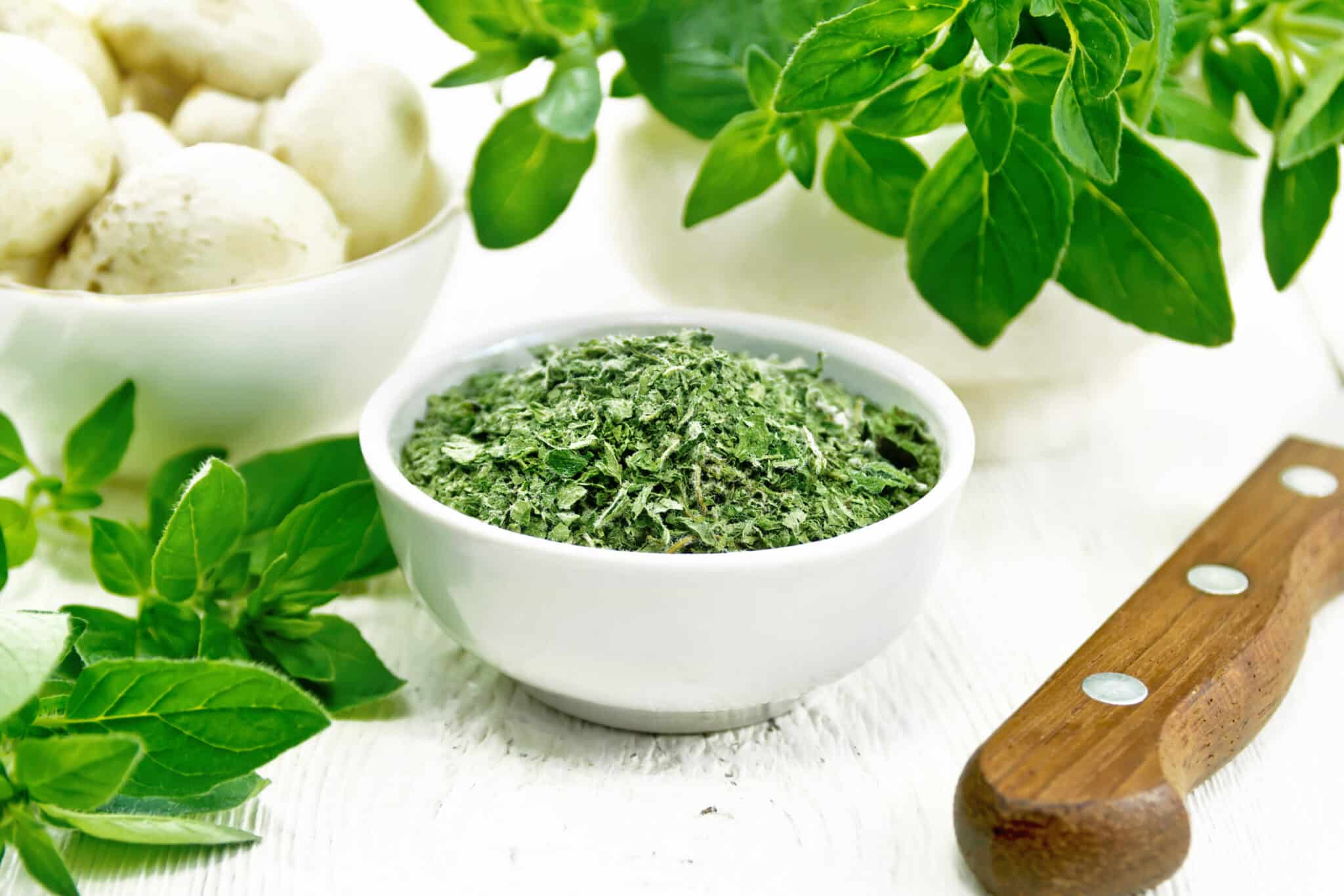Updated on November 9th, 2022
Oregano is a mint-like perennial herb that grows in the mint family. Since ancient times, the plant has been used for culinary and medicinal uses. What is the flavor of oregano? The flavor of this herb is spicy and peppery. With a tinge of camphor, it has a slightly harsh aftertaste. The flavor is strong at first, with a minty aftertaste. Throughout the Mediterranean, the herb is utilized in culinary preparations, and it goes well with pizza, pasta, and other spicy foods. It’s also a tasty complement to tacos and burritos.

Its leaves have a peppery, astringent, or hay flavor. Its flavor can be fairly bitter when raw, but it softens as it cooks. Fresh oregano has a pungent, forceful flavor, so use it sparingly. A dish can be ruined if too much salt is added. It can also be found in various spice combinations, such as thyme and basil.
What is Oregano?
Oregano is a Mediterranean plant commonly used in cooking, and Oregano is a member of the Laminae (mint) family. Oregano is bitter as well, and it overpowers the other fresh ingredients. Its flavor might be very strong or very weak, but its distinct flavor will alter the overall flavor of the food. Whether fresh or dried, oregano will bring out the finest in your dish.
It’s been used in cuisine for ages, and it’s frequently utilized in recipes due to its fiery flavor. It’s also used as alternative medicine, but there’s not enough evidence to know its effectiveness.
“Oregano” stems from Greek words that indicate “heart delight.” This makes sense because oregano increases memory and concentration in students studying for exams when consumed or smelt. Additionally, those same advantages make it beneficial for enhancing motivation during workouts.
Oregano is available in two forms: dried leaves and ground spice. But, no matter what shape you buy them in, make sure they’re organic, so you get all the health-boosting nutrients without any extra chemicals like fertilizers, pesticides, or fungicides.
What does Oregano Taste Like?
The flavor of oregano is robust and earthy, with a small bitterness reminiscent of the aromatic organic component camphor. It has a fine balance between sweet and spicy. Oregano’s wide diversity of essential oils, such as pinene, limonene, thymol, and carvacrol, contribute to its distinct flavor.
Oregano is a herb that is more closely related to mint than basil. The flavor of oregano has been described as “pungent” and “strong,” implying a strong spicy flavor with sweet and sour undertones. Oregano adds flavor to meals by balancing the sweetness of an acidic or salty dish. It can also be used with dried basil and thyme for a spicier dish (but not quite hot).
When cooking, keep in mind that higher heat results in a more pungent-tasting food, while lower heat results in the oregano losing part of its taste due to less contact time on surfaces. The leaves themselves are too rough to use in dishes to substitute thyme.
Oregano is a good choice if you balance out more strong flavors like onions or garlic. Although dried and crushed oregano is commonly accessible in grocery stores’ spice sections, fresh oregano is just as good. If you have access to a herb garden, snip a few leaves with scissors and toss them in shortly before cooking your food, and you’ll get all of the flavors without having to chop anything beforehand.
Fresh Oregano vs. Dried Oregano
Oreganos are used in various dishes and come in various flavors; some are spicy, while others are gentler. Fresh Oregano and dried Oregano have different appearances, which is to be expected.
- The color of fresh oregano is a brilliant, lush green whereas.
- The color of dried oregano is brown, and it has a powdery consistency rather than leaves.
First and foremost, chefs frequently favor fresh over dried because of the visual difference described above. Other criteria, such as the amount of time required for preparation or how it interacts with specific sauces, come into play when deciding which variety to use.
Oregano vs. Basil
Basil and oregano are two of the most popular herbs, but which one is superior? Basil has a sweeter flavor due to its high linalool content. Because oregano contains carvacrol, it has a flavor similar to thyme or peppermint. Both oregano and basil are potent, delicious plants with several therapeutic properties.
Basil is heart-healthy and aids digestion, while oregano contains anti-inflammatory characteristics that can aid in the healing of sore throats.
Oregano also contains antioxidants such as rosmarinic acid and ursolic acid, making it a good choice for people who wish to boost their immune systems or speed up their recovery from illness.
It’s difficult to tell if one herb is better because each has diverse culinary uses and health advantages, but basil may be what you’re searching for if you like a milder flavor.
Varieties of Oregano
- The most common type of Oregano, Mediterranean Oregano, also known as Greek Oregano, common oregano, or Origanum vulgare hirtum, is characterized by a flavor that is less pungent than its pungent aroma.
- Mexican Oregano, also known as Lippia graveolens, is a savory oregano species popular in Mexican cooking due to its strong peppery undertones combined well with chilies. Mexican Oregano is a flavorful form of oregano.
- Italian oregano, this hybrid herb, a combination of oregano and marjoram, has a sweeter flavor and is excellent for seasoning pizza sauces and pasta dishes. Italian oregano is the name given to this hybrid herb.
- Origanum notes, also known as Cretan Oregano, Turkish Oregano, and pot marjoram, are Oregano species native to Greece, Turkey, and Italy and have a similar flavor profile to common oregano.
Is it Possible to Substitute Oregano?
Oregano is a really unique herb. Its flavor lends a certain something to a variety of recipes. But what if you’re in the middle of preparing one of those dishes and discover you’re out of oregano? According to The Spruce Eats, you can simply switch marjoram for its botanical relative. Majoram is sweeter and gentler. They suggest halving the amount of oregano called for in the recipe. Is there no marjoram? It’s no problem. Look in your spice cabinet or on your shelf for basil or thyme. Oregano can be replaced with either of these two herbs. Martha Stewart recommends remembering the following rule: one tablespoon of fresh oregano equals one teaspoon of dried oregano if you need to replace fresh oregano with dry oregano.
What is the Best Way to Use Oregano Leaves?
Oregano is commonly used in Italian cuisine, but it also has a variety of other culinary applications. Oregano can be used as a salad dressing, in dips or dressings for pasta and chicken meals, or to flavor meatloaf and add flavor and zest to sauces and pizza toppings.
The aromatic oils of oregano contain strong compounds that can aid digestion by increasing the synthesis of digestive enzymes in the stomach. This makes it ideal for salads and pizzas and Italian cooking, where many sauces necessitate extensive boiling times. It’s also a great addition to soups (both vegetable and animal-based broths) and sauces like tomato sauce; it’s especially good because it keeps its potency even after long cooking times.
Finally, oregano leaves are an excellent substitute for basil or thyme in recipes since they provide all the benefits without any drawbacks. Oregano was thought to be a cure-all for all ailments in ancient times. It’s been used as an antiseptic and pain reliever for centuries, and it’s been used to cure depression, headaches, and even foul breath.
What Foods Complement Oregano the Best?
Lamb, chicken, seafood, tomatoes, eggplant, and potatoes are some foods that pair well with oregano. It is a wonderful ingredient to include in casseroles, stews, and soups. Oregano is a flavorful herb that may make them taste even better when added to egg dishes. Oregano is an excellent accent to the dish whenever lemon is in a savory meal.
Which Vegetables Complement Oregano?
Broccoli, broccolini, and broccoli rabe are all green and leafy veggies. Because of their versatility, you may season them with virtually any herb or spice you like without fear of ruining the dish. The following herbs and spices work particularly well: basil, chives, curry, dill, garlic, ginger, marjoram, oregano, red pepper flakes, rosemary, sage, tarragon, and thyme.
What is the Purpose of Oregano in the Kitchen?
Oregano is a versatile herb that has use beyond just pizza and spaghetti sauce. The vibrant green herb imparts a savory and perhaps unanticipated earthy flavor to various foods, such as poultry, fish, hamburgers, and even beans. It is a wonderful addition to any cuisine, and you could even incorporate it into your next batch of homemade pesto for a somewhat heartier topping for pasta or fish.
What is the Best Way to Keep Oregano Fresh?
Oregano is a versatile herb that can be used in various meals and sauces, but finding fresh leaves at your local grocery store can be difficult. It is, however, simple to produce oregano and dry the leaves for use during the winter.
Drying Oregano Leaves:
- Harvest your oregano plants when they are grown yet still green in late summer or early fall.
- Remove all branches from the plant except one stem with at least 12-inch-long leaves (the thicker, the better).
- Any visible flower heads should be removed, and this will aid in the prevention of mold growth during the drying process.
- Wrap each branch in paper towels individually to keep moisture and absorb oils while drying.
- If food scents are a concern, you may want to cover them loosely with cheesecloth.
- Allow the leaves to dry for two weeks in a cool, dark location.
Remove any residual paper towel and place it in an airtight glass container (such as mason jars) or cellophane bag with one corner sealed shut when you’re ready to preserve your oregano. If desired, you can add dry spices like marjoram and thyme to the mix. Dried oregano will survive between two and three years if stored properly.
Conclusion
Oregano is a well-known culinary herb in Italy and has been employed for taste enhancement purposes for many years. Oregano and wild marjoram are herbs, but oregano is more common. Even though it belongs to the mint family, it also belongs to the mint family. It has a powerful aroma that is both camphoraceous and fragrant. It has a mildly sharp flavor, green, hay, mint, and soil undertones. It has a mouthfeel that is just a little bit dry. Although you can find it in various health food stores, many individuals prefer the Greek variety of the product.
The use of oregano in food preparation is possible. It has a flavor that is both warm and delicious, and it can hold its own against oily meals. It goes well with fish, meat, and vegetables, and it is especially delicious when combined with olive oil and seafood. Adding just a little oregano to a meal will also help enhance its aroma. This herb is versatile enough to be used in a wide range of different cuisines. Dishes like chicken, hog, and lamb can benefit greatly from having it included in their preparation.

